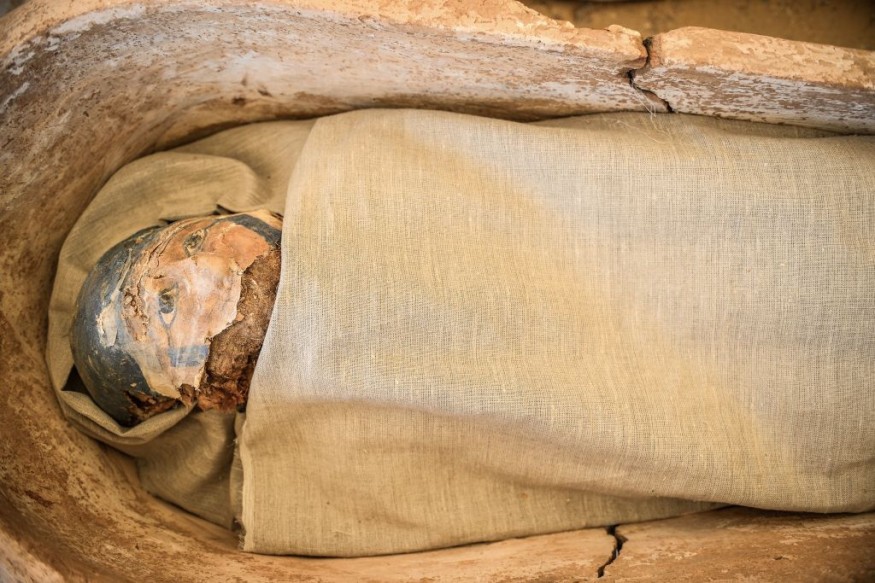In 2021, archeologists revealed a so-called "incredible first," specifically the finding of a mummified fetus preserved inside its mummified primeval Egyptian mother's abdomen.
Who this woman was, a ScienceAlert report specified, and how she died more than 2,000 years ago, both remain mysteries, therefore she is identified as the "Mysterious Ladies."
Nonetheless, now, it's known how the fetus was preserved. Based on a new study by the Warsaw Mummy Project, the preservation took place through the acidification of the body of the woman as she went through decomposition. As the study investigators so vibrantly put it, the process is similar to "pickling an egg."

Mummified Fetus Starting to 'Pickle'
According to Marzen Ozarek-Szilke, a bio-archeologist from the University of Warsaw in Poland, and Wojciech Ejsmond, an archeologist from the Polish Academy of Sciences, the fetus stayed in the untouched uterus and started to "pickle." The two added, it is not the most "aesthetic comparison," although it delivers the idea.
Ozarek-Szilke and Ejsmond also explained, blood pH in corpses, which include the uterus's content, falls substantially, turning out to be more acidic, ammonia concentrations and formic acid rise over time.
Additionally, they continued, the body's placement and filling with natron, a mixture of salts collected from dry lake beds, substantially limited the access of both oxygen and air. The end result is a nearly "hermetically sealed uterus" that contains the fetus, a similar Verified News Explorer report specified.
The question of whether what was discovered was actually a fetus was postured by Sahar Saleem, a radiologist from Cairo University in Egypt, who wrote a response to the first discovery.
Specifically, she noted that no bones could be identified in the mummy's scans and thus, the fetus's identification needs to be indecisive.
This is not unexpected though, the team of Ozarek-Szilke argued. Fetal bones are quite inadequately mineralized during the first two trimesters. Meaning, they are difficult to identify in the first place, after going through taphonomic or preservation processes. More so, bones are even difficult to locate during archeological excavations.
Egyptian Mother and Fetus Mummified Differently
The process of acidifying that would have occurred inside the Mysterious Lady's corpse, as her body decomposed would have demineralized further the already subtle fetal bones.
It is not different from the natural mummification process that occurs in peat bogs, where the highly acidic environment is pickling soft tissue, although demineralizes the bones.
In their study published in the Journal of Archaeological Science, the researchers wrote, the bone demineralization process in an acidic environment is comparable to an experiment with an egg.
The reason the Mysterious Lady's body, and the fetus's body are different in this regard is that, because they mummified in a different manner.
The Egyptian mother was mummified using natron, a naturally occurring mix of salt that the ancient Egyptians used to disinfect and dry out bodies. The fetus in her sealed womb, on the other hand, mummified in the resulting acidic environment.
Secrets Taken to Grave Revealed
The analysis of the team also determined that, because of the position of the fetus, as well as the birth canal's closed condition, the woman did not die due to childbirth.
Previous analysis found that the Mysterious Lady was aged between 20 and 30 years old when she died, and her pregnancy was from 26 to 30 weeks.
The researchers explained in their study that the mysterious lady and her unborn child died together, and by examining her, they were able to restore the mother and child's memory.
The study investigators elaborated, they remember that it was long-lived person who had her dreams, perhaps, loved ones and was loved. Now, they continued explaining, the mother revealed the secrets she took with her to grave.
Related information about the mummification process is shown on Getty Museum's YouTube video below:
Check out more news and information on Archeology in Science Times.












